Digging up St Peters 1
On January 18th a large pile of uprooted plants and stone started to appear in the church yard of St Peter’s Church.
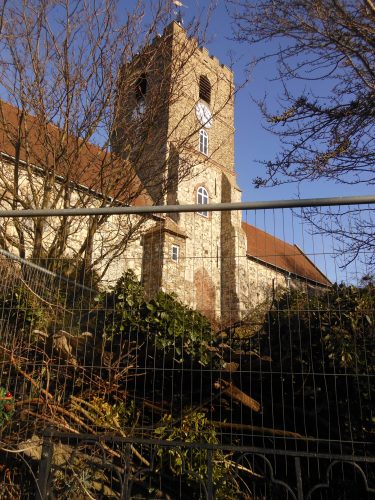
This was the initial clearing of one part of the garden that occupied the area in what was once the South Aisle of the ancient church.
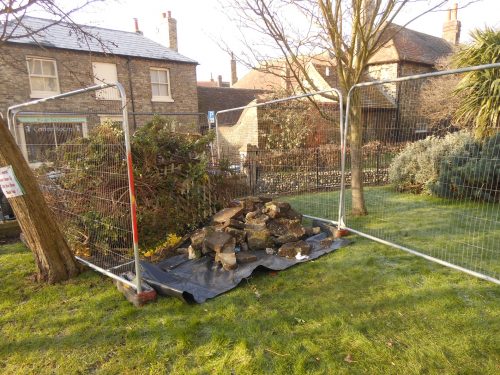
The rest of this charming garden will remain intact.
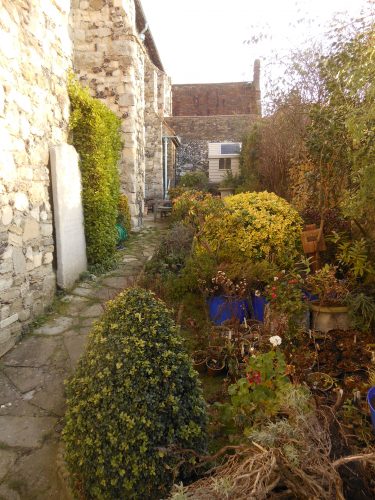
St Peter’s Church was originally built in Norman Times (1066 and all that) but was destroyed by the French in 1216 in one of the frequent raids they inflicted on the coastal ports of Kent. This resulted in the Plantagenet Kings creating the Cinque Ports as a line of defence and the development of a navy. At that time, Sandwich Haven, as it was known then, was a large port, the second only to London and directly on the coast. The alluvial soils from the Stour River ultimately silted up the port and its easy access to the channel.
St Peter’s was re-built by Carmelite monks from Normandy in the late 13th or early 14th century most likely on the original foundations.
In 1661, a large earthquake hit Sandwich and the Norman tower collapsed destroying the South Aisle. The fragments of stone were used to fill in the arches of the nave.
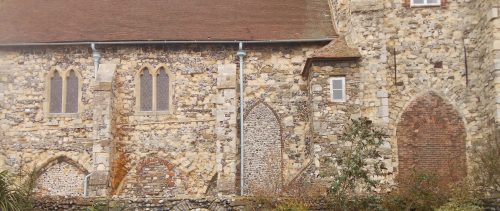
The more than slightly battered effigy of Sir John Grove of Staple who helped build the South Aisle was brought inside the church where he rests to this day.
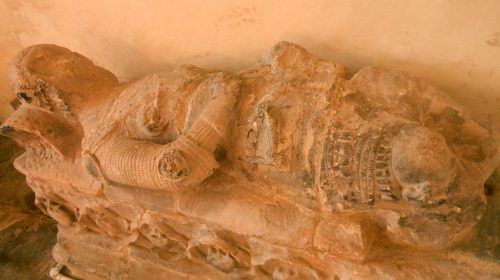
During the 16th and 17th century Sandwich became a popular destination for Hugenot refugees fleeing religious persecution in France and the Low Countries. They contributed to the re-erection of the tower and their influence can be seen in the dutch style cupola at the top of the tower.

At the end of this first day, Jeremy Friend and Andrew Johnson of Garden Construction who were brought in by the Canterbury Archaeological Trust to execute the initial clearing of the site uncovered the vault of a crypt

It would appear to be the vault that is mentioned on a marble plaque inside St Peters that in this vault are the remains of a Katherine Harvey who “on the eve of her intended Marriage was suddenly attacked with alarming symptoms of a rapid decline which closed her prospects of earthly felicity, separated her from all family and endearing connections and terminated her existence in this World by removing her to a better on the 28th day of May, 1807 aged 25years.”
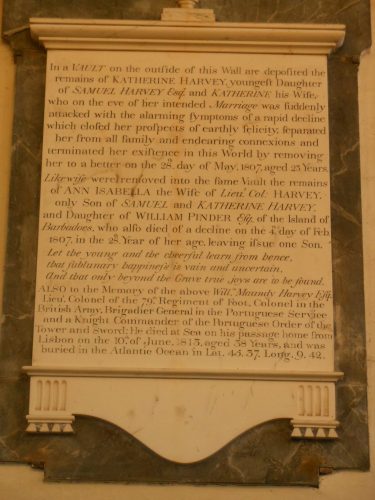
Annie Partridge of the Canterbury Trust who is directing this dig has said that the remains of Katherine Harvey and other members of her family mentioned above will be left intact and not disturbed. The dig will go on around it.
This archeological dig will be taking place on weekends from Sunday 22nd January through to Sunday the 19th of February. You will be kept updated on how this exciting excavation progresses in future blogs.

 Previous Post
Previous Post
